At the end of the 1939 – 45 the once great name of Auto Union disappeared off the map as a consequence of the new communist administrative arrangements that emerged in East Germany.
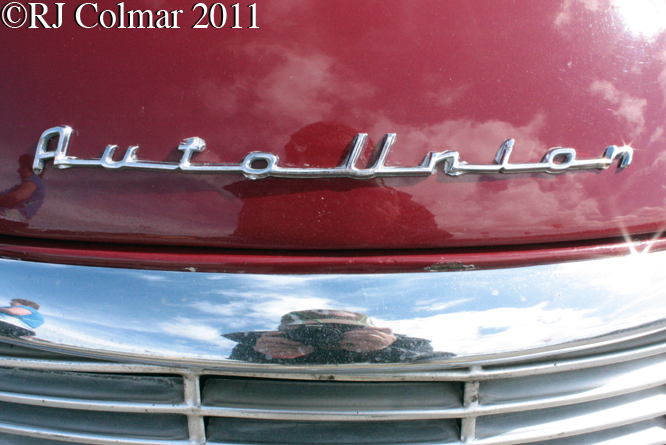
What assets remained of Horch, Audi and the Auto Union racing departments in Chemnitz and Zwickau were liquidated and those in Zwickau were handed over to VEB (Volkseigener Betrieb = Peoples owned Enterprise) which went on to build a series of two stroke vehicles, starting with pre war DKW designs, that were eventually sold under the Trabant brand after a law suit compelled VEB to desist selling models with the DKW name.
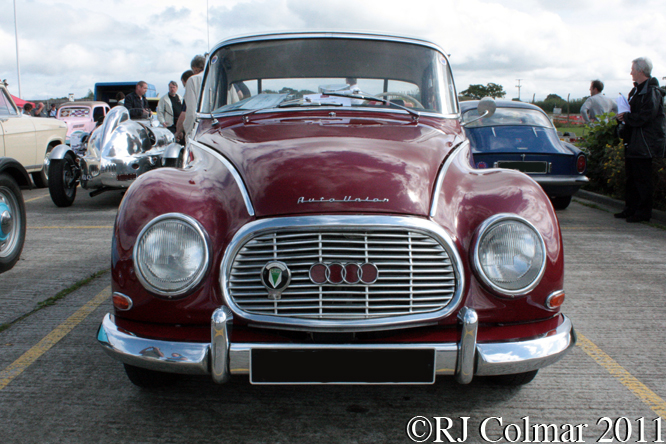
Auto Union AG was reconstituted in 1949 with only the DKW brand name surviving which sold a variety of two stroke vehicles including a motor cycle and delivery van before moving back into automobile manufacture.
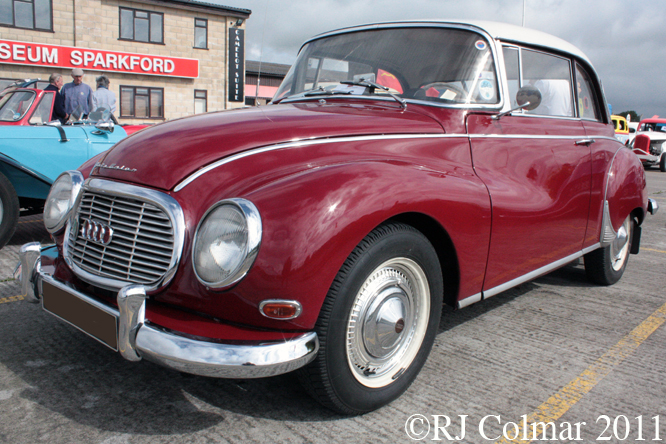
In 1958 the now Daimler AG owned Auto Union brand returned to the market place with the Auto Union 1000 S powered by a 44 hp 1 litre / 61 cui two stroke straight 3 cylinder motor driving the front wheels.
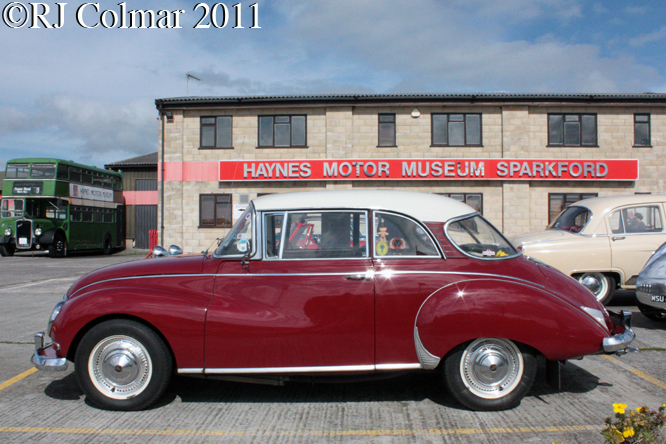
The 1000 S model was available in 2 door saloon, as seen here, 4 door saloon, 2 door pillarless Coupé and Estate variations. There was also a “baby” thunderbird” sports car option which I’ll be looking at in a future Wednesday Continental Curiosity edition.
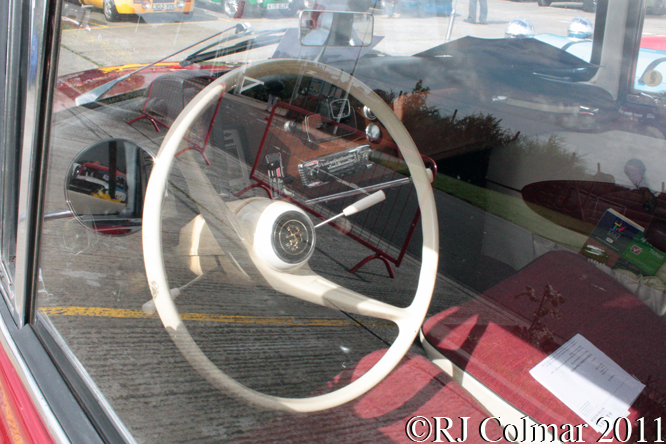
As with most front wheel drive vehicles the Auto Union 1000S gave occupants greater interior space than their competitors which in this case was the Volkswagen Beetle.
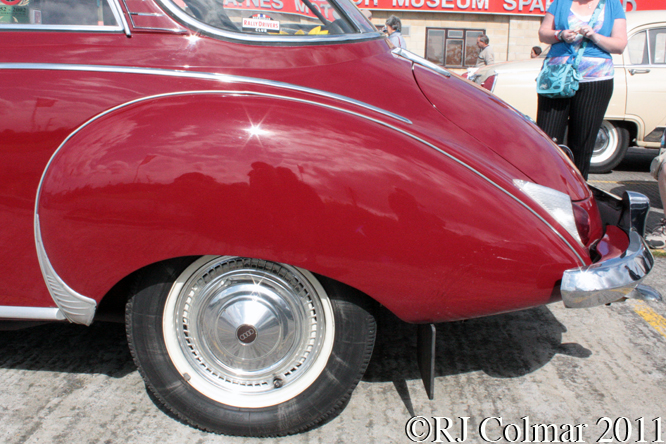
In 1960 a now 50 HP Auto Union was tested with a rest to 60 mph acceleration time of 23.6 seconds and top speed of 80.9 mph. Auto Union 2 stroke motors branded DKW were to be found in the proving ground open wheel series known as Formula Junior.
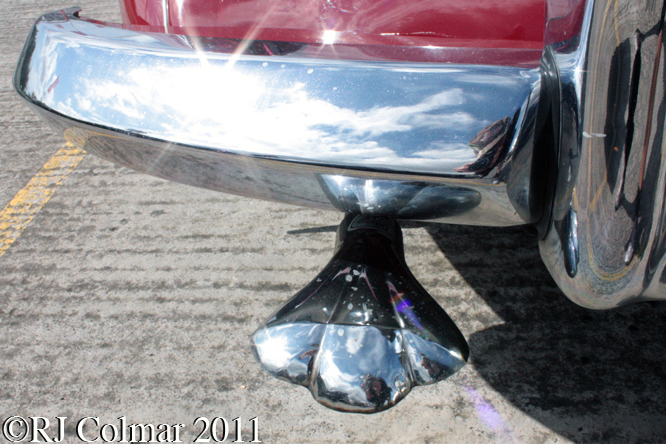
1961 saw the introduction saw the introduction of a clean oil regulator which was intended to reduce the blue exhaust smoke haze, common to two stroke motors, by ensuring an exact 40 to 1 petrol to oil mix using a separate oil tank to feed the carburetor. Unfortunately because of the severe European winter in 1962/63 oil viscosity and flow through the narrower new carburetor feed was adversely affected resulting in crankshaft damage.
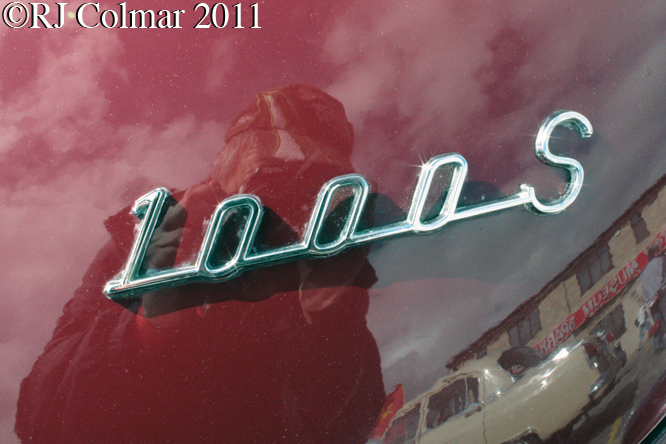
This 1963 model seen at the Rare Breeds show at Haynes International Motor Museum a couple of years ago is said to have come to Britain from Sweden via Norway.
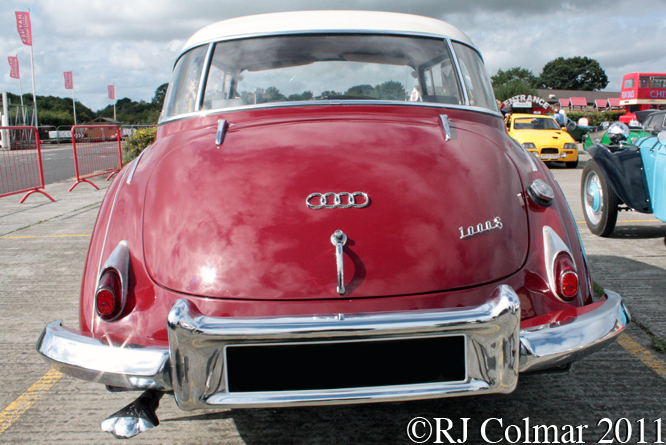
Between 1958 and 1963 171,008 Auto Union 1000 S models were manufactured at Auto Unions plant in Dusseldorf. By 1964 Volkswagen had acquired Auto Union and DKW and Audi. VW ditched the Auto Union and DKW brands as production of 2 stroke models was phased out in favour of new water cooled four stroke models that derived from the DKW F103 which was marketed as the Audi F103 in 1965 which transformed the fortunes of first Audi and then as the new motor was further developed later Volkswagen.
Thanks for joining me on this “Four Rings Return” edition of “Gettin’ a li’l psycho on tyres” I hope you will join me again tomorrow. Don’t forget to come back now !

